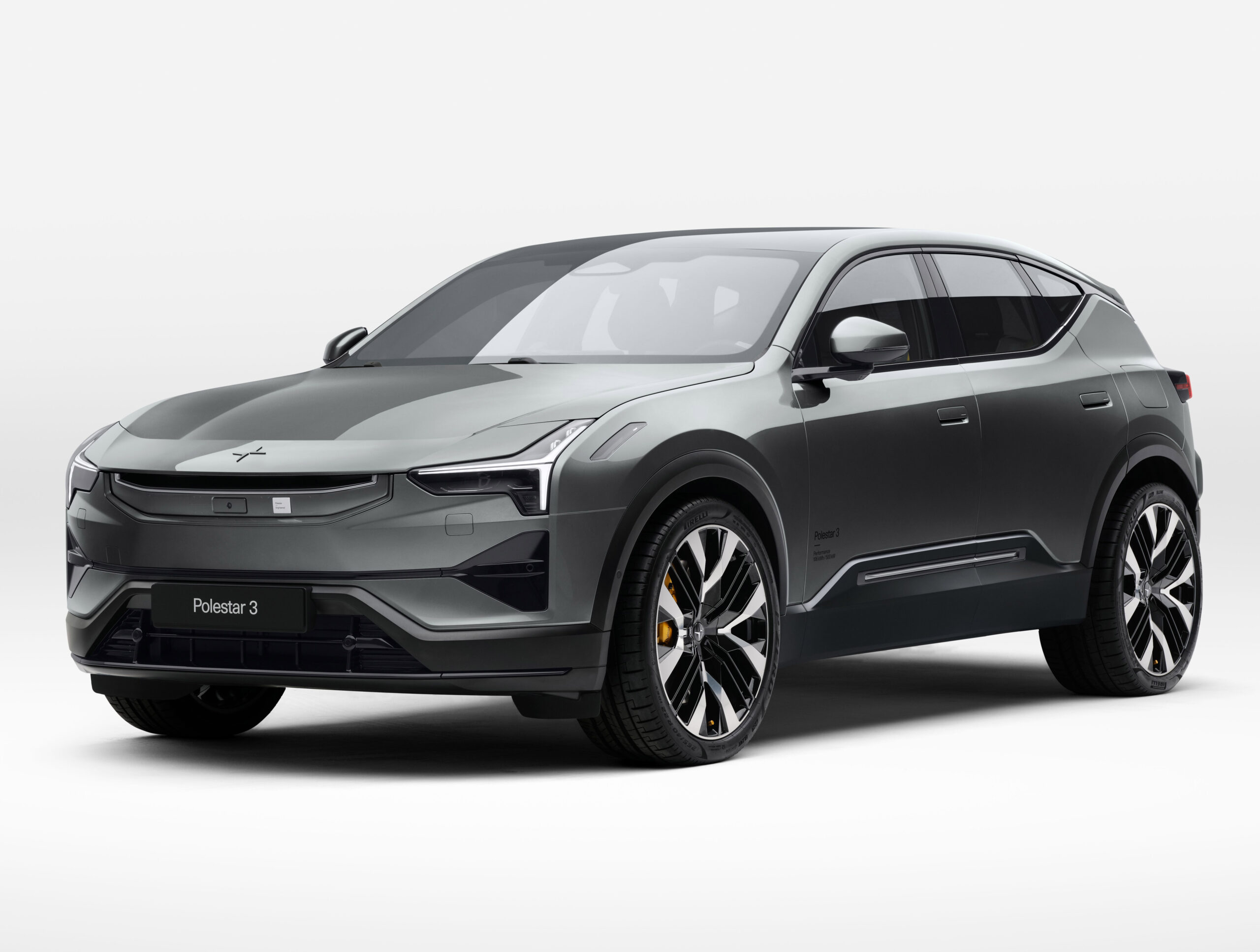

The entry-level model in the Lexus lineup isn’t a sedan, no, it’s the cute and quirky UX 250h ‘subcompact crossover’. Now a hybrid-only affair, this top-spec F Sport Handling model even has a hint of sporty pretense thanks to a firmer adaptive suspension and sharper design elements. Do the recent upgrades and a reliable and efficient hybrid system make the UX, essentially a hatchback, worth consideration above the higher-riding and more powerful competition?
The Lexus UX wears a distinctive design with the signature spindle grille up front and standard LED headlights, DRLs and turn signals. Though Lexus claims this is a crossover, just look at it. Its low roofline, substantial front and rear overhangs, and short wheelbase scream hatchback. This is, in my eye, the spiritual successor to the CT 200h, which actually only just recently when out of production in Europe.

The F Sport Handling model has a few unique design elements that set it apart from the base model. Most of those elements are shared with the F Sport Design trim just below this, including the sportier 18″ wheels, unique front and rear bumpers, a black roof, black roof rails, a darker grille, and blacked-out badging. This particular model had the factory accessory 18″ wheels that feature a sharp and sporty directional design. I really love the design and think it helps the UX stand out in a parking lot. So does the fantastic Ultrasonic Blue Mica 2.0 paint.

Competitors for the UX are considered to be the Audi Q3, Volvo XC40 and BMW X1, among others here and there. Those all differ from the UX in the fact they ride a bit higher off the ground and look more like SUVs than hatchbacks. They aren’t necessarily longer than the UX, however. The new X1 is only 0.2″ longer, the XC40 2.2″ shorter, and the Q3 0.4″ shorter. They are all taller by at least two inches, though this model’s roof rail cross bars add considerable height.
Inside, this top-spec UX is a really nice place to be. The dashboard is a relic from Lexus’ last-generation design theme that you can also still find in the ES and LS, but that’s not a bad thing. Lexus finally ditched the Enform user experience with the trackpad controller on the center console in favor of a touchscreen running Toyota/Lexus’ new Audio Multimedia system. It features wireless Apple CarPlay and Android Auto, “Hey Lexus” voice commands, and tethered navigation, but no 360-degree surround view camera. Thankfully, the UX is small so one is not super necessary.

The back seat is pretty tight, but not quite as claustrophobic as I had initially expected. My knees were not jammed into the front seat back when it was in my driving position. Head room was still available for my 5’9″ frame, and the USB ports and air vents made the space feel more inviting than it otherwise would. The standard-size moonroof may compromise head room for tall folks up front, but enough of the ceiling is carved out behind the apparatus to allow for tall torsos. The Audi Q3 and Volvo XC40 definitely feel roomier due to their taller profiles, however.

Behind the second row is a tiny cargo area with 17.1 cubic feet of space. That’s more than a family sedan, but less than most competitors in this space. Actually, every competitor will give you over 20 cubes in the back, so if that’s a concern for you, the UX might not be the best choice. You can still fold down the second row and get over 30 cubic feet, or add a cargo carrier to go with the accessory roof rail cross bars this tester had, but don’t expect to be able to haul four adults and all of their gear without one.

The UX was launched with two powertrain choices, a gas-only naturally aspirated 4-cylinder and a 2.0L 4-cylinder hybrid. Now, your only choice is the more powerful and efficient hybrid, and that’s definitely for the best. This system is available in front-wheel drive or e-AWD with an electric motor motivating the rear axle. Total system horsepower is 181 horsepower, no matter how many wheels are spinning, and combined fuel economy is best-in-class at 42 combined. The power is a much more usable than the gas-only engine was, though the planetary-style gear set has a very CVT-like feel.
The first thing to note about the UX out on the road is the fact that visibility out of the back on either side is compromised by the large C-pillar. So, it’s a good thing it has the blind spot monitor. The other thing you’ll notice is that, just like the other models in the Toyota and Lexus lineup with this hybrid system, it’s very smooth, very quiet, and it’s always going to start off the line using electric propulsion. Unlike the company’s plug-in hybrids, however, time using electricity alone in this is significantly lower due to the smaller battery. So, you do have to use a feather-light touch with your foot in order to get up to 25 mph using just electricity. Otherwise, the engine is going to kick in, but it’s pretty quiet in doing so.
When it comes to 0-60 mph acceleration, it took me 8.4 seconds in this all-wheel drive equipped F Sport Handling model. That number falls somewhere in between the official front-wheel drive and all-wheel drive numbers Lexus has provided. It’s not going to light anyone’s hair on fire, but it’s way more usable and acceptable than the old gas-only UX 250h. That’s one of the reasons they decided to go the hybrid-only route. The other would be to claim the title for most efficient small luxury ‘crossover’ on the market, but more on that in a bit. The brakes feels very smooth and Lexus-like, with no dead space at the top of the pedal. It’s a very easy brake pedal to live with around town, with little to no discernment between the regenerative and friction brakes. You cannot adjust regenerative braking like you can on a Hyundai/Kia hybrid, unfortunately. It took me 128 feet to get from 60 mph back to 0, which is on par with the more mainstream offerings in the segment.
When it comes to handling, this is one area where the UX actually really surprised me. This F Sport Handling model gets adaptive dampers and a sportier suspension, making this the best-driving UX by a long shot. I do wish this was how all UX models drove, because it has a really nice balance of that isolation from the road you expect from Lexus and a dash of sportiness you get from other F Sport models. Traditionally, this has been one of the more boring options in the Lexus lineup, and they have definitely turned up the dial on sportiness over the years. This model has always been left behind somewhat, but I think this trim should satisfy consumers cross shopping with the non-sporty German competitors like the Audi Q3. The steering itself is actually pretty direct, not overly heavy, though noticeably heavier than a non-F Sport steering rack.
I think Lexus should make this setup the standard for all UX models, and then offer something a bit sportier with more power, perhaps around 200 horsepower like you’ll find on the Toyota Prius and Corolla Cross Hybrid. This is already not a super loud car on the inside, even for an entry-level model. I measured 57 decibels at 50 mph, which is aided by the fact that this hybrid system does the best it can at turning off the gas engine when coasting or driving at slower speeds. That also helps with fuel economy, a core mission of this model. I managed 41.4 mpg in my testing, which is way better than anything you’ll get out of a Mercedes-Benz GLA, Audi Q3 or Volvo XC40. The Volvo’s advantage is that an all-electric model is and has been available for many years now. The next UX would be remiss not to be offered in a pure EV form, but all signs are pointing to that being very likely.
The Lexus UX represents a marginal value proposition with a starting price of $36,490 including destination for the UX 250h front-wheel drive model. All-wheel drive adds $1,400. This trim includes Lexus Safety Sense 2.5+ (not the latest 3.0 version with Proactive Driving Assist), an 8.0″ Audio Multimedia infotainment display with wireless Apple CarPlay and Android Auto, heated side mirrors, and LED headlights/taillights. You’re not going to find a good audio system or heated seats until you jump up to the Premium trim.
The new top trim is my tester, the 250h F Sport Handling model, which can be equipped with front- or all-wheel drive for either $43,920 or $45,320. It comes with the adaptive dampers, heated and ventilated leather seats, a sunroof, an F Sport steering wheel with paddle shifters, a 12.3″ Audio Multimedia display, Active Sound Control, and an additional Sport+ drive mode.
Do I like the UX? Yes, it is a really efficient option backed by Lexus reliability and a robust hybrid system, but it lacks the gravitas and feature content of some competitors. It’s no longer embarrassingly slow, but it’s not as powerful as an Audi Q3 or Volvo XC40. The true saving grace for the UX is the fact that, despite how it is marketed by Lexus, this is actually the only luxury small hatchback available in the U.S. For that, it is a unique offering that works well for couples or small families, but not for families of more than four average-sized people. It’s just too small for that. If that works for you, I think you should give this little guy a look.



